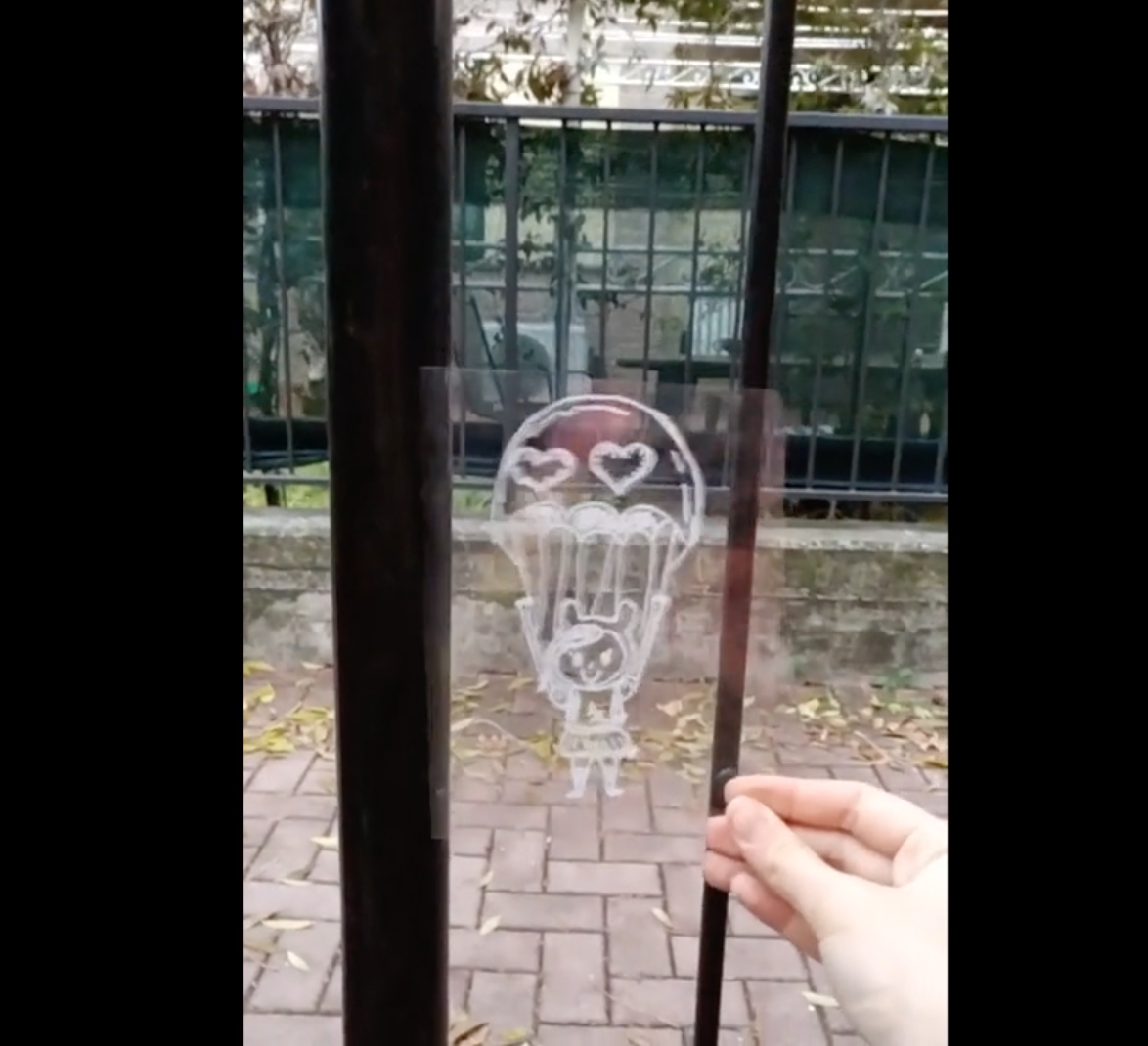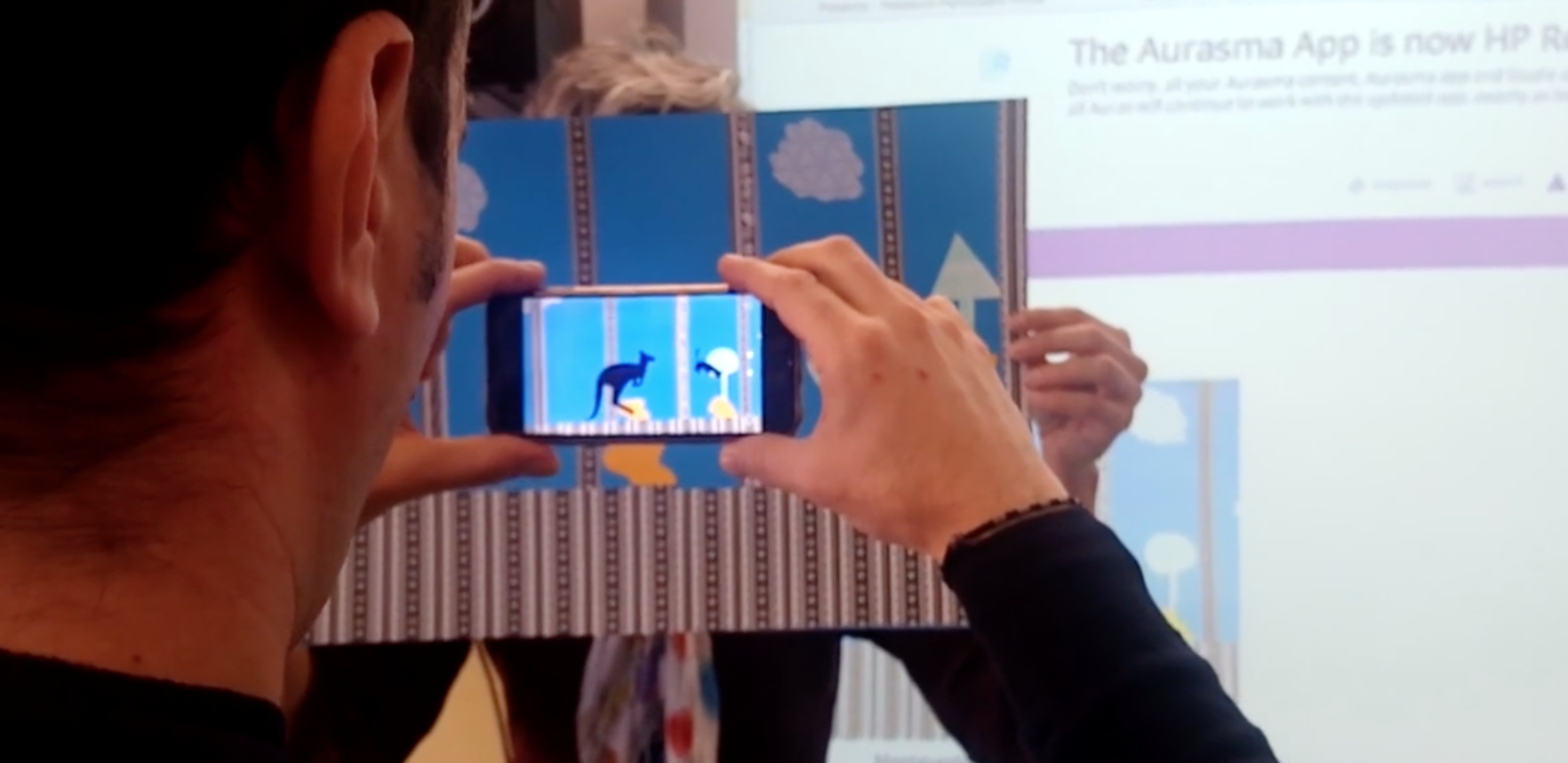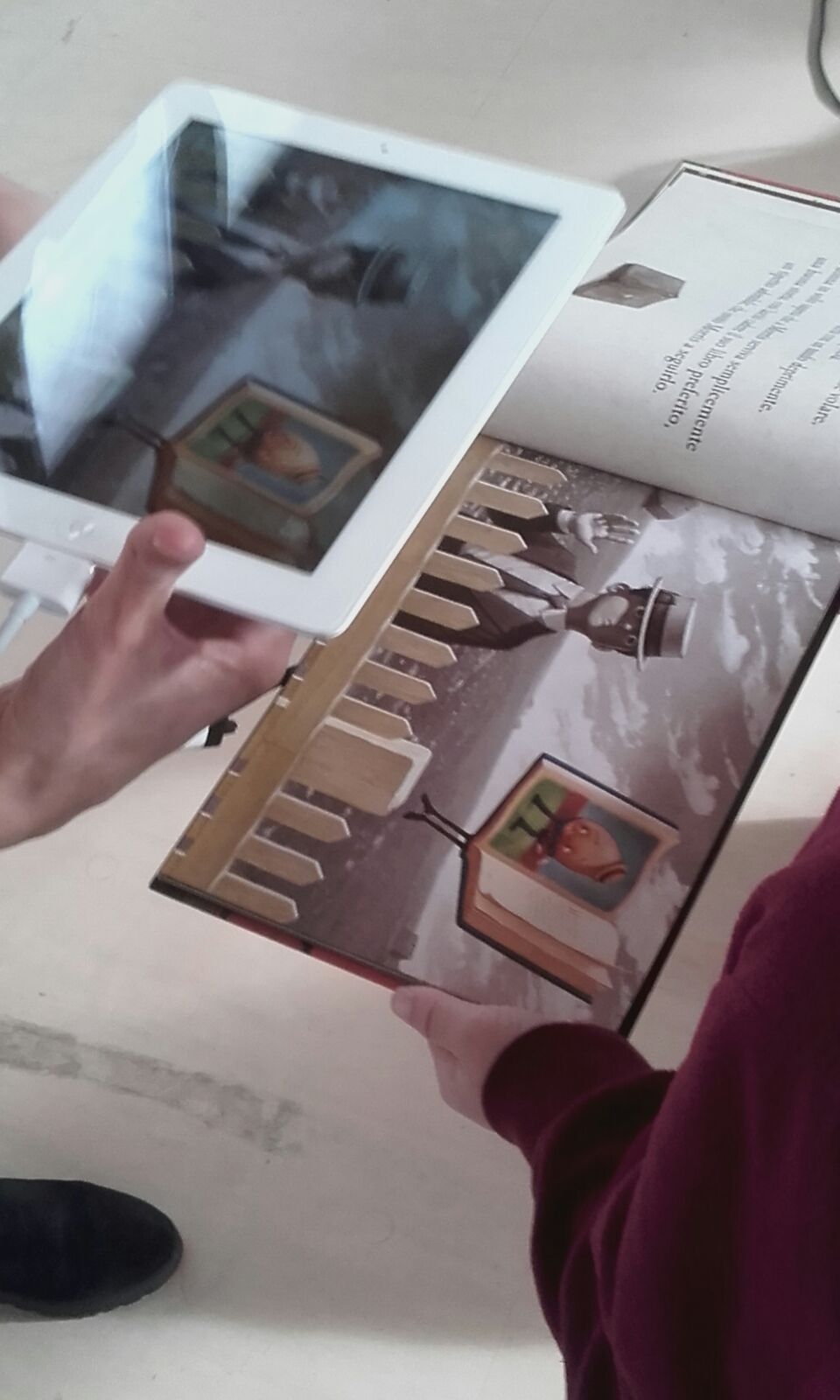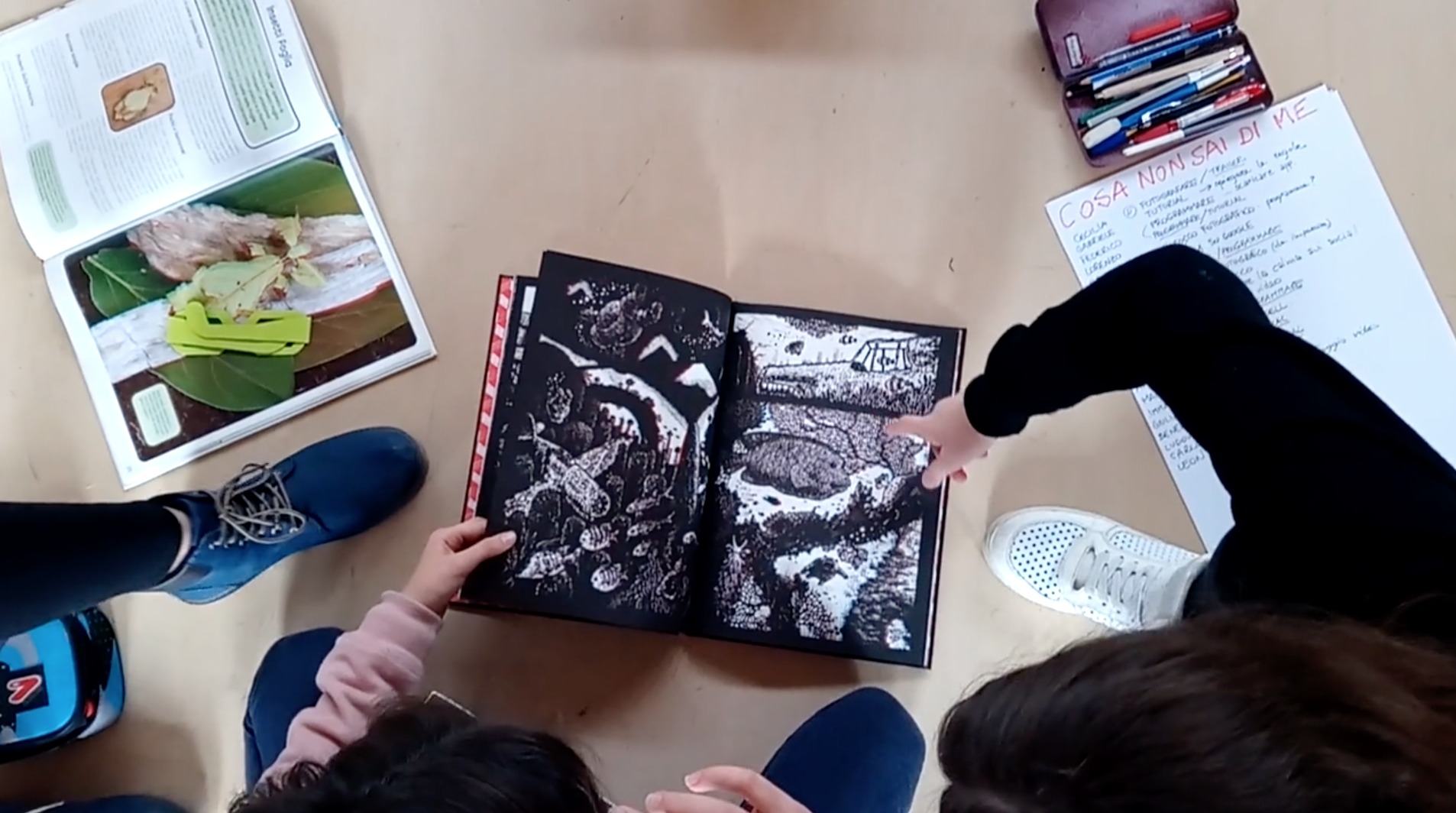AR for storytelling
Organising institution: Zaffiria
Country: Italy
Age:
11-13 years old
Key question:
How to "increase the reality" of own school and local community?
Objectives:
- Understand and handle a tool like AR in a creative way, developing a community project.
- Why, when, which is the purpose of adding content to reality? Does diminished reality exist?
- How do you design and project with technology as augmented reality?
Time:
8/10 hours
Software and apps to be used:
- Aurasma
- iStopmotion
Main argument:
To create collective stories to encourage, to promote participation in the cultural life of the community.

Brief presentation: :
The Digital Atelier tries to explore augmented reality inspired by the creative and poetic uses of technology by some artists, such as Julie Stephen Chheng, who have been able to reconcile manual and technological aspects to create stories capable of emotion. In the digital atelier the students investigate:
- How many ways are there to increase reality (from artists working with acetates, to window games, to video mapping)?
- What is the meaning of this operation? Does adding to reality improve the experience? How do I delete it: does "diminished reality” exist?
- How can a story be created? Examples from Julie S. Chheng, Uramado Exhibition and other artists. Design stories using paper art, animated drawings (iStopmotion) and AR.
- Preparation of a collective exhibition with the collaboration of Rocca dei Bentivoglio Foundation.
Civic participation:
The students learn the use of technology applying it to a concrete and real experience that involves their territory and that allows them to interact with cultural institutions, to put themselves in the shoes of those who usually create cultural content for their community.

Preparation of space for the Atelier:
Different tables in which the students find different tools: acetates, permanent marker, Tipp-Ex, images, printed, postcards, books, video projector, tablet ... Invent ways to make the materials interact with reality and create a catalog of possible ways to modify perceived reality.
Materials needed:
- acetates,
- permanent marker,
- Tipp-Ex,
- images of postcards with augmented reality,
- video projector, overhead projector,
- projection app,
- green-red lenses.
Main inspirations taken from personal research:
- Julie Stephen Cheng, Aurasma, nanotechnologies and scientific books, Le Signe laboratories, Center national du graphisme (FR), Bruno Munari "più o meno", Francesca Galeazzi, drawing on photography; writers.
Mass media and social media connections:
Understanding how a technology works to be able to imagine and manage a project. Understanding some aspects of the relationship between technology and social life. Promote students creativity in a cooperative way and experiment that technology is a design tool not only for consumption.

How do you plan to give voice to students to present or show their personal skills and knowledge?
The students freely explored the materials and techniques and made a personal list of the techniques that had struck them to interact by changing the reality. The exploration took place individually, in pairs, in a small group: the materials were placed on the floor of the class and the students moved from material to material discussing what they already knew and what they found new and interesting, facilitating the emergence of prior knowledge.
How do you collect information as the starting point of a Digital Atelier?
Use of "What you do not know about me" template - each student presented it to the rest of the class. The exchange between students was particularly interesting: friends were often the first, to suggest to their classmate, who was presenting to add skills and knowledge to his card.
Introducing students to the key question - the research begings:
In how many ways can we increase the real? What does it mean to add content to reality? What is the real? If you can add something can you also subtract? Does a “diminished reality” exist?
Experimental phase
- Action that unfolds the practical activity to clarify the question (experimental phase): The teacher takes an acetate, begins to draw a cat (or a dot if the cat is too difficult ...) then moves the acetate on the wall creating the idea of a cat's movement. Is this augmented reality?
- Active work of the students: Use of different materials to experiment possible relationships between technology and reality in order to find the most interesting, starting from the techniques and materials they had previously used: acetates, permanent marker, Tipp-Ex, images of postcards with augmented reality, video projector, overhead projector, projection apps, green-red lenses. The difference is that in the first phase they made a catalog of the most interesting possibilities for them, but here they choose one and try to develop it. They will then create direct projections with the overhead projector or play with the acetate drawings and the environment at the windows ... each group develops its own project.
- Presentation of findings and results (visualisation of information): Each group presents its work to others: in the case of the realized DA, not every student developed a real project. Some students immediately went to work with an idea in mind and the classmates "followed" and helped in the realization. In any case, the experimentation was active and the initial questions were not only answered verbally but also with an "active doing" that led students to "manipulate", for play, the reality they saw from the school windows or on the walls of the class.
- Analysis of results: Self-assessment round of students and first evaluation of the teacher

Project/design phase - part 1
- Second action that unfolds the practical activity (project/design phase): Giving books and apps that explore augmented reality, this time though using tools like iPads, iBooks and apps. At this point, looking at several examples and begin to formulate a definition of "augmented reality".
- Active work of the students: Tablets, smartphones, augmented cards, books to explore different possibilities of digital media are prepared on different tables. Students evaluate these augmented reality projects, determine which criteria to evaluate, which aspects are interesting and which are not.
- Presentation of findings and results (visualisation of information): Report of all the criteria that the students used to evaluate the augmented reality experiences they tested with a final poster, on wrapping paper, or billboard, or on the interactive whiteboard. They are asked to use the cell phone and an acetate (supplied) to invent a first micro-history at home: students are asked to work on a small piece of reality starting from the example of some street artists, even, playing with a acetate and the Tipp-Ex (as an instrument for drawing); using hand and the cell phone as technologies to animate the story.
- Analysis of results: Screening of the videos students made at home and listening to their experiences.
Project/design phase - part 2
- Third action that unfolds the practical activity (project/design phase): Could we be able to invent a collective and augmented story? Proposal to create a collective project using digital tools: first experience with Aurasma and iStopMotion.
- Active work of the students: The students work with stencils and forms that help them to design their illustrations and produce the cardboard supports that are necessary for the creation of the final images and the superimposition of the analogical reality with the augmented one. These "frames" will be the activators of the animations. Division into 5 groups and creation of 5 pictures and 5 stop motion animations. The story is set in a zoo: frame after frame, animals and insects come to life and fly away from the picture to get into reality. The students realized the stop motion with the chroma-key effect (in our case on a blue background), using the technique of stop-motion (small movements and consecutive shots) and the IStopMotion app. Subsequently and collectively, Aurasma was explored: led by the teachers some volunteers tried in turn its functioning through testing and error. The story was created collectively and presented in an exhibition, which was open to the public.
- Presentation of findings and results (visualisation of information): Creation of a final exhibition prototype with the work of the students. The students set up the augmented reality in the music room and guided the audience of parents and teachers who came to see them in the afternoon.
- Analysis of results: Each student was asked for a personal production: starting from a self-portrait or a photo, each student had to tell something about himself in a short video that was then combined with the image. In this way all students showed proof of using augmented reality and part of the exhibition open to the public was composed of their video stories activated by photographs and photographic memories set up on a panel and put on display.
Approach to a new software or a new app:
In this digital atelier different possibilities are presented that students can experiment, learn and evaluate. It is important to find common criteria for evaluation and a common definition in order to review the experiences made and stop / testify / present the learning. All work proceeds through subsequent discoveries, not with frontal work but with a sequence of atelier activities that allow an active learning, involvement and emergence of knowledge and skills of the students who have to take them out to elaborate and solve projects and problems.
Links between the Digital Atelier and real life of the students:T
he idea is to promote an active attitude of the students, which can see themselves as protagonists in front of a technology that in their everyday life is more easily used to consume rather than to create and imagine.

How do you plan to evaluate knowledge and skills?
The assessment was carried out for the entire digital atelier, mainly through class observation and homework that aimed at reinforcing school learning, verifying and giving way to deepen the personal research of the individual student who mediated ideas, achievements and opinions in the collective work.
Conclusion:Students acquired a working methodology to pass from adolescent consumers to "inventors" of new uses, possibilities, projects. They understood the importance of experimentation, of doing and undoing together and giving the best of themselves; they reflected on something that is part of their daily experience but that can be enriched with many possibilities, thanks to the school experience.
The publication was created as part of the project: APP YOUR SCHOOL.
This publication reflects the views only of the author, and the Commission cannot be held responsible for any use which may be made of the information contained therein.

